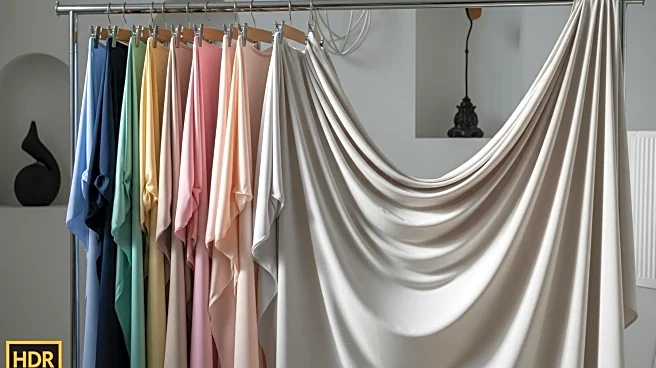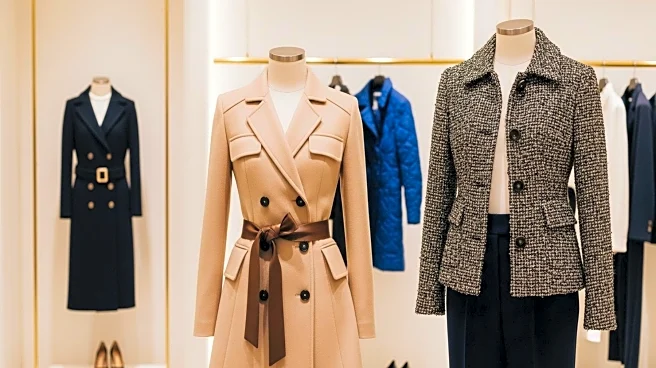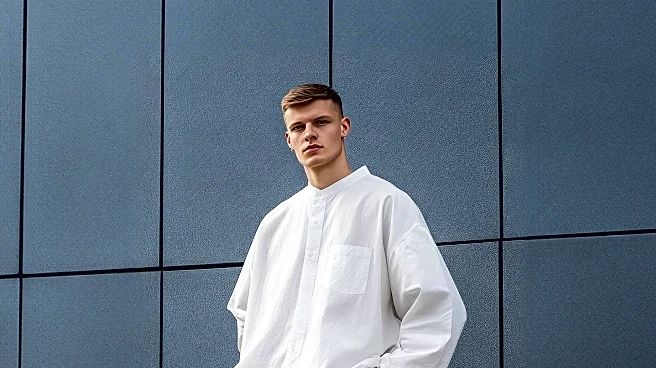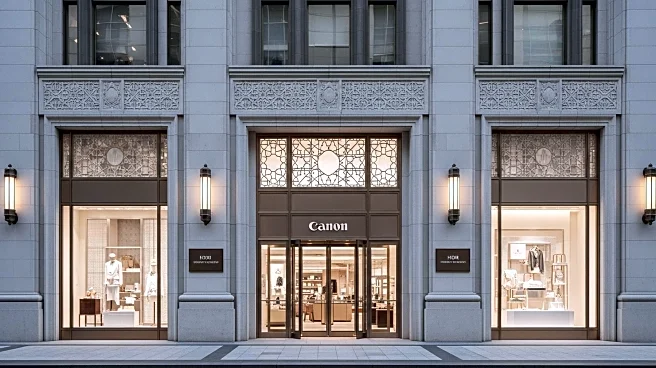What's Happening?
The menswear fashion industry is witnessing a shift from skinny suits to looser fits, as highlighted in recent runway shows for fall 2025. Retailers in the U.S. and overseas are evaluating the viability of this trend, with varying degrees of adoption based on customer demographics and store locations. Key figures in the industry, such as Dan Farrington from Mitchells Stores and Bruce Pask from Saks Fifth Avenue, have noted a gradual move towards relaxed tailoring, with looser fits becoming more prominent in collections. This trend is characterized by softer fabrics and more fluid silhouettes, including wider-legged trousers and boxier jackets. While some retailers are cautiously introducing these styles, others, like Bergdorf Goodman, have seen early success and are increasing their investment in looser suiting silhouettes.
Why It's Important?
The shift towards looser tailored silhouettes in menswear reflects broader changes in consumer preferences and fashion trends. This evolution could impact the U.S. fashion industry by altering production and marketing strategies, as brands adapt to meet the demand for more relaxed fits. Retailers who successfully embrace this trend may gain a competitive edge, attracting customers seeking comfort and modern aesthetics. However, the transition requires careful consideration of customer readiness and market dynamics, as not all demographics may be quick to adopt these changes. The trend also highlights the influence of social media and street style in shaping fashion preferences, potentially accelerating the acceptance of new silhouettes.
What's Next?
As the trend towards looser fits gains momentum, retailers are expected to continue testing and expanding their offerings in this category. The success of these silhouettes will depend on consumer acceptance and the ability of brands to effectively market and integrate them into existing collections. Retailers may also explore collaborations with designers known for relaxed tailoring to further capitalize on the trend. Additionally, the industry will likely monitor the impact of this shift on sales and customer engagement, adjusting strategies as needed to align with evolving fashion preferences.











